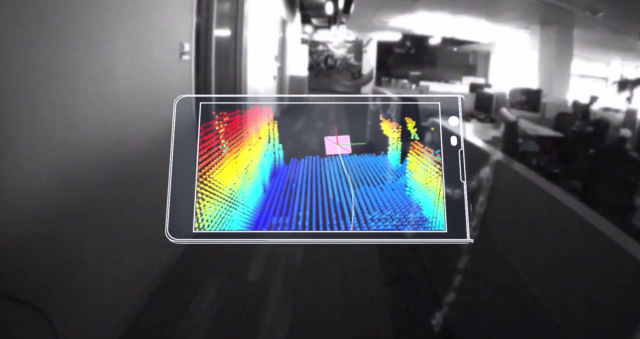Project Tango from Google: a smartphone with a 3D space scanner

A small group of ATAP (Advanced Technology and Projects) engineers at Google is developing advanced technologies. Today she presented her new project Tango . This is a very beautiful technology to build a 3D model of the surrounding space using a smartphone.
The ATAP group has designed a 5-inch smartphone equipped with a stereo camera, sensors and software that track the position of the smartphone in 3D space, as well as scan the surrounding world in real time at a speed of 250 thousand measurements per second. All this is combined into a single 3D-model using a unique processor Myriad 1 , developed by Movidius startup.

')
When the model is ready, the phone can constantly determine its location inside it. On the basis of this model, you can create interesting games, when virtual objects in a smartphone are combined with real objects of the surrounding reality. For example, you can play football on a smartphone by beating a ball from the wall of your own apartment. Or control a real robot in the next room, moving it along the 3D model of this room. Or play hide and seek with an animated character in your own home. In general, the possibilities are incredible.

One can imagine that with the help of crowdsourcing, users will compose a comprehensive 3D model of the whole world - and everyone can easily navigate in space anywhere in the world, in any building.
In the coming months, ATAP intend to release an SDK to create programs on new hardware. The first 200 devices will be sent to developers after March 14th. To take part in the program, you need to come up with an interesting application in the field of indoor navigation, games for one or several players, or data processing algorithms from Tango sensors.

The phone works under Android, so the API for accessing information about orientation, positioning and distance to objects can be used with standard Android applications written in Java, C / C ++, and also on the Unity game engine. The first versions of the algorithms and API will soon be finished, but the project will remain in the status of the experiment after that.
Source: https://habr.com/ru/post/213381/
All Articles